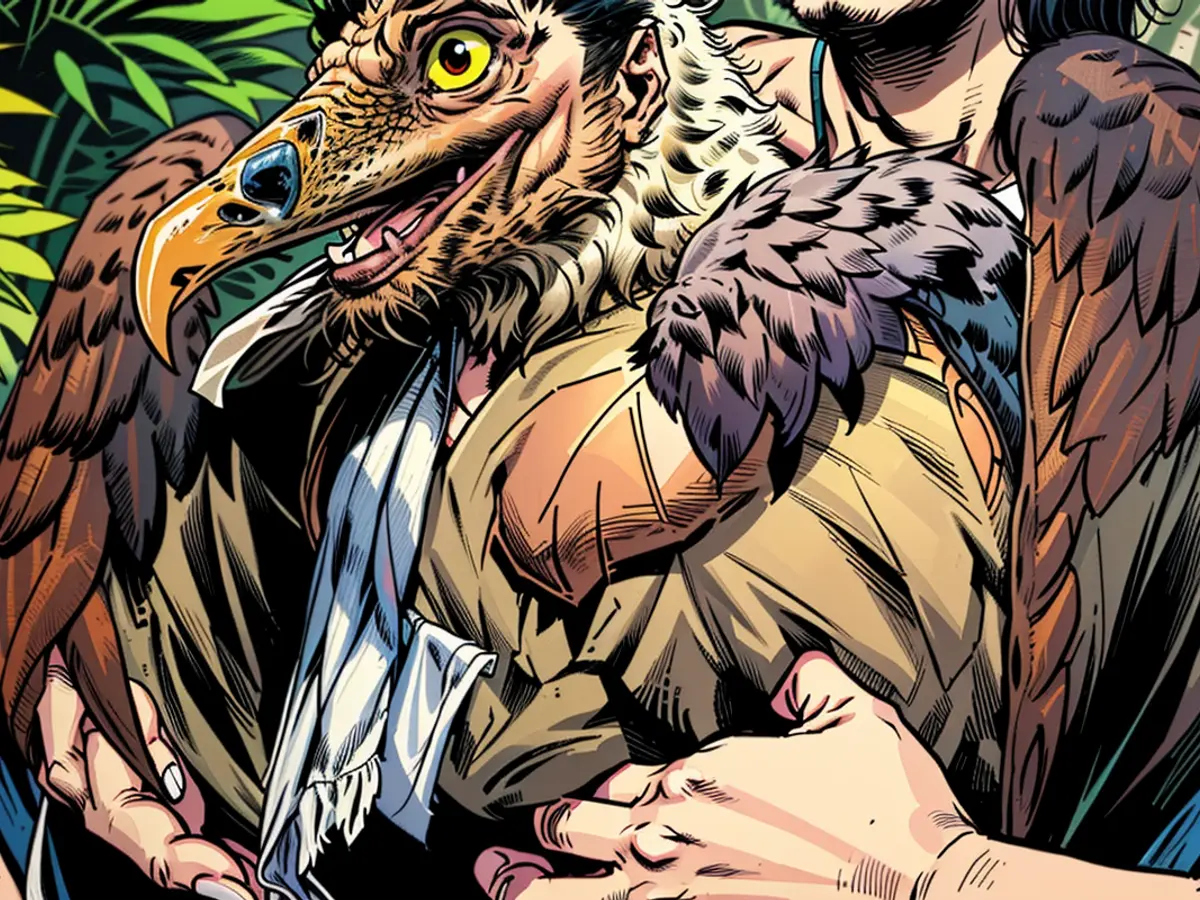Land of Berchtesgaden - Bearded vulture falls off rock, bird conservationists step in to rescue
Following a feud in its nest, a young bearded vulture that was released in May in the Berchtesgaden region fell over 30 meters from its rocky dwelling. Miraculously, Wiggerl escaped unscathed during the fall, as confirmed by the Bavarian Association for Bird and Nature Protection (LBV) on Thursday. The team responsible for the reintroduction of these birds managed to save the vulture on Monday and put it back in its enclosure. At this age, young bearded vultures cannot fly. Therefore, the LBV characterized this occurrence as a "terrifying moment."
Conflicts among young birds are "completely normal"
As with the similarly released young bearded vulture Vinzenz in late May, such conflicts in the nest are typical, according to bird conservationists. The issue is that at this age, the birds cannot break their falls if they plummet.
"As the project staff keep an eye on the nest from an observatory platform all day long, they were able to contact the LBV and the national park expert team straight away after Wiggerl's fall, who then assessed the situation in person shortly afterwards," said LBV's bearded vulture expert Toni Wegscheider.
Because Wiggerl was "apparently startled" and in a rock crevice that was vulnerable to rockslides after the fall, a skilled mountain rescue team covered him under a blanket and brought him back into his rocky den.
Close monitoring of the young bearded vultures
"This episode highlights the significance of the massive care efforts we make for the bearded vultures," said the head of the project at the Berchtesgaden National Park, Ulrich Brendel. "Each individual bird holds enormous importance for the successful return of the species to the Alps, so we strive to guarantee maximum security for the youngsters with intense personnel and equipment resources."
With several live cameras and constant on-site monitoring by national park interns and LBV members, critical situations have thus far culminated in positive outcomes.
First release in 2021
The first bearded vultures released within the project — Bavaria and Wally — arrived from Spain in 2021, just like their successors, Dagmar and Recka. Dagmar is Bavaria's cousin and Recka is Wally's sister, who didn't make it. She was killed by a falling stone. This year, reinforcement arrived in the form of Sisi and Nepomuk — the first male — from Austria.
Bearded vultures, with a wingspan of up to 2.90 meters, are among the largest flying creatures in existence. According to Wegscheider, the last bearded vulture to exist in Germany was shot in 1879 — at Hintersee near Ramsau, not too far from where the young vultures were released in May. Previously, they were thought to be dangerous and would carry off lambs into oblivion. In reality, however, they pose no threat to humans or animals. Their diet consists solely of carrion.
Watch the bearded vulture webcam [1].
Read also:
- The fall of the young bearded vulture occurred in the Berchtesgaden region, which is part of Upper Bavaria, Germany.
- Despite the feud in its nest, the Bavarian Association for Bird and Nature Protection (LBV) continues their efforts in nature conservation for these animals in Bavaria.
- The Berchtesgaden National Park, located in Berchtesgaden Land, has seen the release of several bearded vultures since 2021, with their first two coming from Spain.
- The mountain rescue team, operating in the pristine and beautiful Alps, played a crucial role in safely recovering the young bearded vulture after it fell from its rocky dwelling.
- Bird conservationists in Bavaria, including LBV's bearded vulture expert Toni Wegscheider, are committed to the successful return and population growth of this majestic and harmless species across Europe.








